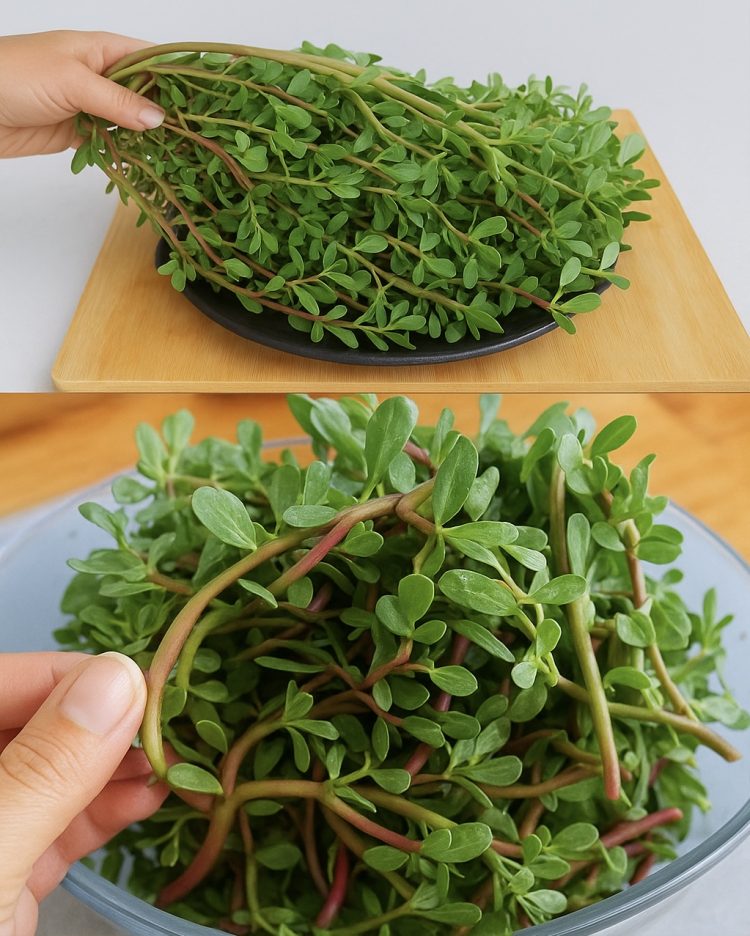Culinary Uses
Innovative Uses:
Pesto:
Replace some or all of the basil in traditional pesto recipes with purslane for a nutrient-dense version of this beloved sauce.
Pickles:
Purslane’s succulent stems and leaves can be pickled, creating a tangy and healthy condiment that can be added to a variety of dishes.
Tips for Incorporating Purslane:
Start Small:
If you’re new to purslane, begin by introducing it into dishes where greens are typically used. Its mild, slightly peppery flavor makes it a seamless addition.
Mix It Up:
Combine purslane with other greens in dishes to get a variety of textures and flavors, as well as a broader range of nutrients.
Use It Topically:
For skin care, consider creating a purslane extract or infusion to use as a facial rinse or adding it to DIY face masks for its antioxidant properties.
How to Preserve Purslane by Freezing
Freezing purslane is an excellent way to preserve its nutritional benefits and enjoy it year-round. Here’s how to do it:
Materials Needed:
Fresh purslane
Ice cube trays
Olive oil or water
Freezer bags or containers
Step-by-Step Guide:
Wash and Prep:
Thoroughly wash the purslane to remove any dirt or debris.
Pat dry with a clean towel.
Chop the Purslane:
Chop the purslane into small, manageable pieces.
Fill Ice Cube Trays:
Place the chopped purslane into the compartments of the ice cube trays.
Fill each compartment with either olive oil or water, covering the purslane.
Freeze:
Place the ice cube trays in the freezer and freeze until solid.
Store:
Once frozen, transfer the purslane cubes into freezer bags or containers for long-term storage.
Label the bags or containers with the date and contents.
Using Frozen Purslane:
Soups and Stews:
Add the frozen purslane cubes directly to soups and stews. They will melt and incorporate seamlessly into the dish.
Smoothies and Juices:
Toss a few frozen purslane cubes into your blender for smoothies or juices. This adds a nutritional boost and helps keep the drink cold.
Sautéed Dishes:
Thaw the cubes and sauté the purslane with garlic and olive oil for a quick and nutritious side dish.
By following these tips, you can make the most out of purslane’s nutritional benefits and enjoy this versatile green in a variety of dishes. Whether fresh or frozen, purslane is a fantastic addition to your diet and wellness routine.
To cultivate purslane in your garden, follow these steps:
Select a Sunny Location: Choose a sunny spot in your garden with well-drained soil.
Prepare the Soil: Loosen the soil and remove any weeds or debris.
Planting: Sow purslane seeds directly into the soil or transplant seedlings from pots or trays. Space the plants about 6-12 inches apart.
Watering: Water the plants regularly, keeping the soil evenly moist but not waterlogged.
Maintenance: Mulch around the plants to retain moisture and suppress weeds. Harvest purslane leaves as needed, taking care not to disturb the roots.
With minimal effort, you can enjoy a bountiful harvest of nutritious purslane from your garden throughout the growing season.
Purslane is a nutrient-rich plant with numerous health benefits and culinary uses.
Conclusion:
Purslane is a versatile and nutrient-rich plant with numerous health benefits. Whether enjoyed raw in salads, cooked in stir-fries, or blended into smoothies, purslane offers a delicious and nutritious addition to any diet. Incorporating this humble plant into your meals can help support overall health and well-being, making it a valuable addition to your culinary repertoire.
